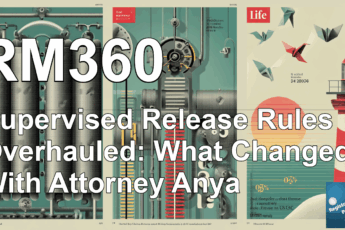California’s Complex Legal Landscape: Understanding the People vs. Christopher Hamilton Case
Introduction
In recent years, legal disputes surrounding sex offender registrations in California have gained significant attention, highlighting the complexities and nuances of the state’s laws. One particularly intriguing case is that of The People vs. Christopher Hamilton, which sheds light on the intersection of federal and state laws regarding sex offender registration and the challenges that individuals face navigating the legal system. This blog post will provide an in-depth analysis of Hamilton’s case, the implications of tier designations under California law, and crucial takeaways for those affected by similar legal matters. By understanding this case, readers will better appreciate the legal landscape surrounding sex offender registration and the importance of seeking professional legal advice.
The Case Overview
In 2009, Christopher Hamilton was convicted of federal felony possession of child pornography (CP), resulting in a three-year prison sentence and a mandate to register as a sex offender for 15 years. Fast forward to 2022, and a federal district court terminated Hamilton’s registration obligation, concluding that he had fulfilled his requirement. However, the California Department of Justice subsequently informed him that he must register for life under California law as a tier three offender. Hamilton’s subsequent petition to the superior court to terminate his registration requirement was denied, leading to an appeal.
This case presents a unique intersection of state and federal regulations, illuminating the often harsh and seemingly contradictory legal trajectory individuals like Hamilton face.
Understanding Tier Designations Under California Law
The classification of sex offenders in California is governed by Section 290 of the Penal Code, which establishes tier designations based on several determining factors:
- Type of Offense: The specific crime of conviction plays a pivotal role in determining tier status.
- Risk Assessment: Static risk assessment instruments evaluate the likelihood of reoffense to establish risk levels.
- Recidivism and Prior Convictions: An individual’s history of reoffending and prior convictions provides insight into their risk assessment.
- Out-of-Jurisdiction Offenses: California assesses whether a federal conviction equates to a registrable state offense.
- Custody Exposure: The nature of the offense—whether classified as a felony or misdemeanor—significantly impacts the tier designation, with felonies typically resulting in higher tier classifications.
In Hamilton’s instance, the federal felony conviction for possession of CP was deemed equivalent to a California felony under Section 311.11, placing him in tier three status, which mandates lifetime registration.
The Denial of Hamilton’s Petition
The superior court upheld the classification established by the California Attorney General, affirming Hamilton’s tier three status. Additionally, other constitutional challenges raised in the petition, including equal protection and procedural due process claims, were dismissed, with the ruling highlighting that Hamilton’s treatment and sentencing aligned with California’s felony classification for similar offenses.
The ruling underscored an essential aspect of the legal framework: a federal offense is not automatically categorized as a state offense in California. As a result, individuals previously convicted under federal law may face more stringent registration requirements upon moving to California.
Key Takeaways: Navigating the Legal System
Hamilton’s case illustrates critical lessons for individuals confronted with similar legal predicaments:
- Seek Professional Legal Guidance: Those with federal or out-of-state convictions should consult with knowledgeable attorneys before attempting to navigate the complex state registration requirements. Hiring an attorney can help clarify the nuances of these laws and avoid unnecessary time and expense in legal disputes.
- Understand Registration Requirements: It’s vital for individuals to be acutely aware of the specifics concerning their offenses and the tier designations that apply, as California’s legal landscape for sex offenders can differ significantly from federal laws.
- Anticipate Legal Challenges: Being proactive in understanding the legal ramifications of one’s status can help mitigate risks. Hamilton’s case demonstrates the importance of grounding any legal actions in comprehensive knowledge of state laws to avoid the pitfalls experienced in his situation.
Conclusion
The People vs. Christopher Hamilton serves as a striking example of the intricate legal issues surrounding sex offender registration in California. While the case may seem specific to Hamilton, its implications resonate broadly for individuals grappling with the consequences of past convictions. The interconnectedness of federal and state laws complicates individuals’ lives, emphasizing the necessity for thorough legal knowledge and quality professional advice.
Navigating these legal waters is undoubtedly challenging, but understanding the system and seeking guidance can provide individuals with the clarity and direction they need. As legal professionals like Chance Oberstein indicate, knowing your standing and the state’s legal requirements before delving into bureaucracy can save significant time, energy, and emotional turmoil.
For anyone facing a similar situation, reaching out to a qualified attorney who can offer tailored advice based on individual circumstances is not only advisable but essential. This precaution may serve as a critical lifeline in ensuring that individuals are treated fairly and equitably under the law.




Leave a Comment